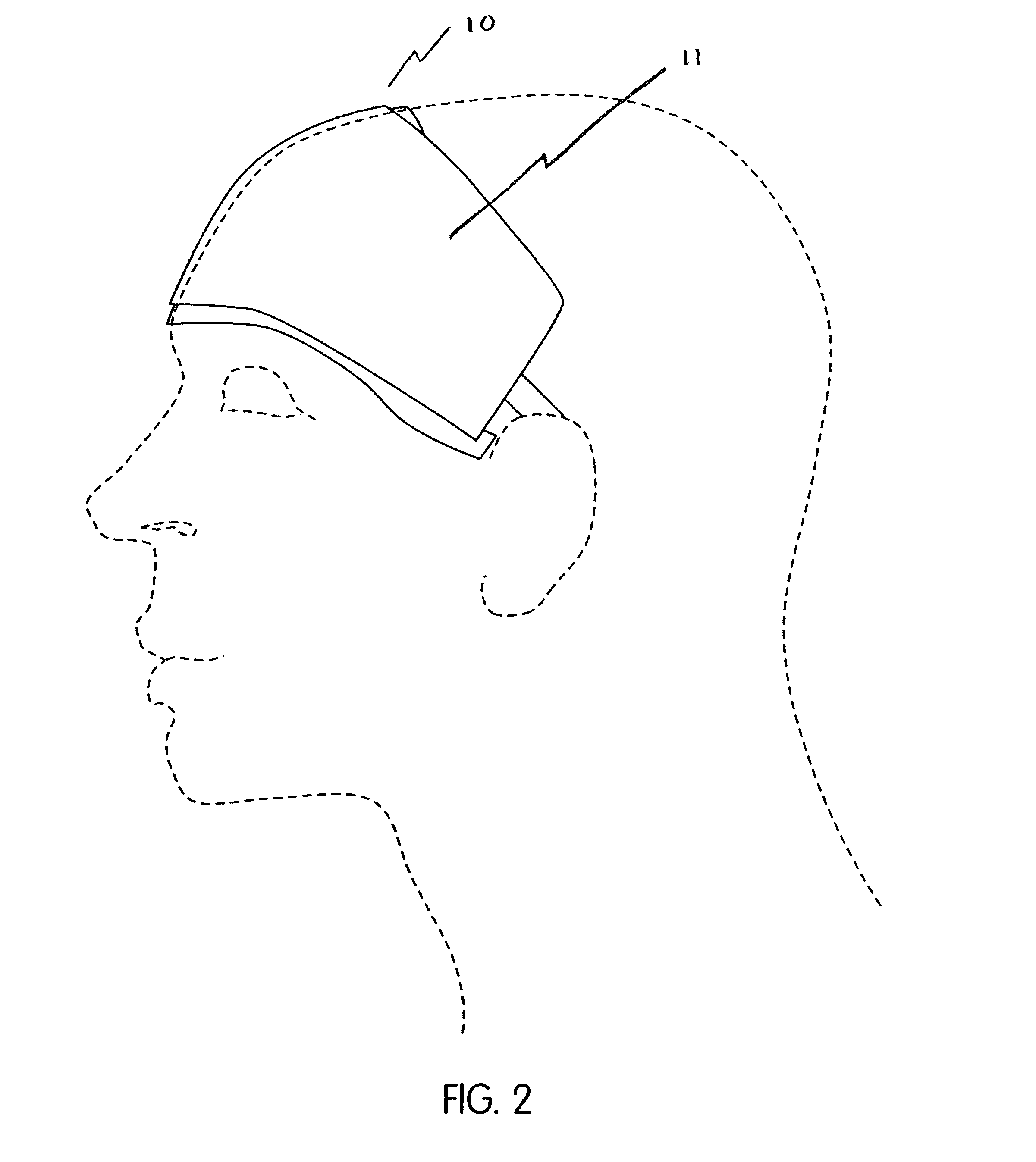Method and apparatus of noninvasive, regional brain thermal stimuli for the treatment of neurological disorders
a brain and brain thermal stimulation technology, applied in the field of brain thermal stimulation delivery methods and apparatuses, can solve the problems of prescriptions that can have unwanted and harmful side effects, medications that are quite expensive and potentially addictive, and medications that even become less effectiv
- Summary
- Abstract
- Description
- Claims
- Application Information
AI Technical Summary
Benefits of technology
Problems solved by technology
Method used
Image
Examples
example
[0092]The invention is further described in the following example, which is not intended to limit the invention in any way.
[0093]Research Design and Methods. A within-subjects design was used to test hypotheses. The patient group included 10 patients with primary insomnia. The primary outcome measure was NREM sleep rCMRglu in the prefrontal cortex.
[0094]Design considerations. An attempt to maximize acute effects of regional cerebral thermal therapy (RCTT) was made to determine if it has an effect on reducing metabolism in the prefrontal cortex in the first NREM cycle in insomnia patients. RCTT was applied 60 minutes prior to GNT (good night time) and continued for 60 minutes after GNT. The total time of application was 120 minutes both before sleep and continuing in to the first NREM cycle.
[0095]A 14 degree centigrade cooling stimulus (50 degrees Fahrenheit) was used for an hour prior to sleep onset, followed by an 18 degree centigrade cooling stimulus once sleep onset has been achi...
PUM
 Login to View More
Login to View More Abstract
Description
Claims
Application Information
 Login to View More
Login to View More - R&D
- Intellectual Property
- Life Sciences
- Materials
- Tech Scout
- Unparalleled Data Quality
- Higher Quality Content
- 60% Fewer Hallucinations
Browse by: Latest US Patents, China's latest patents, Technical Efficacy Thesaurus, Application Domain, Technology Topic, Popular Technical Reports.
© 2025 PatSnap. All rights reserved.Legal|Privacy policy|Modern Slavery Act Transparency Statement|Sitemap|About US| Contact US: help@patsnap.com



